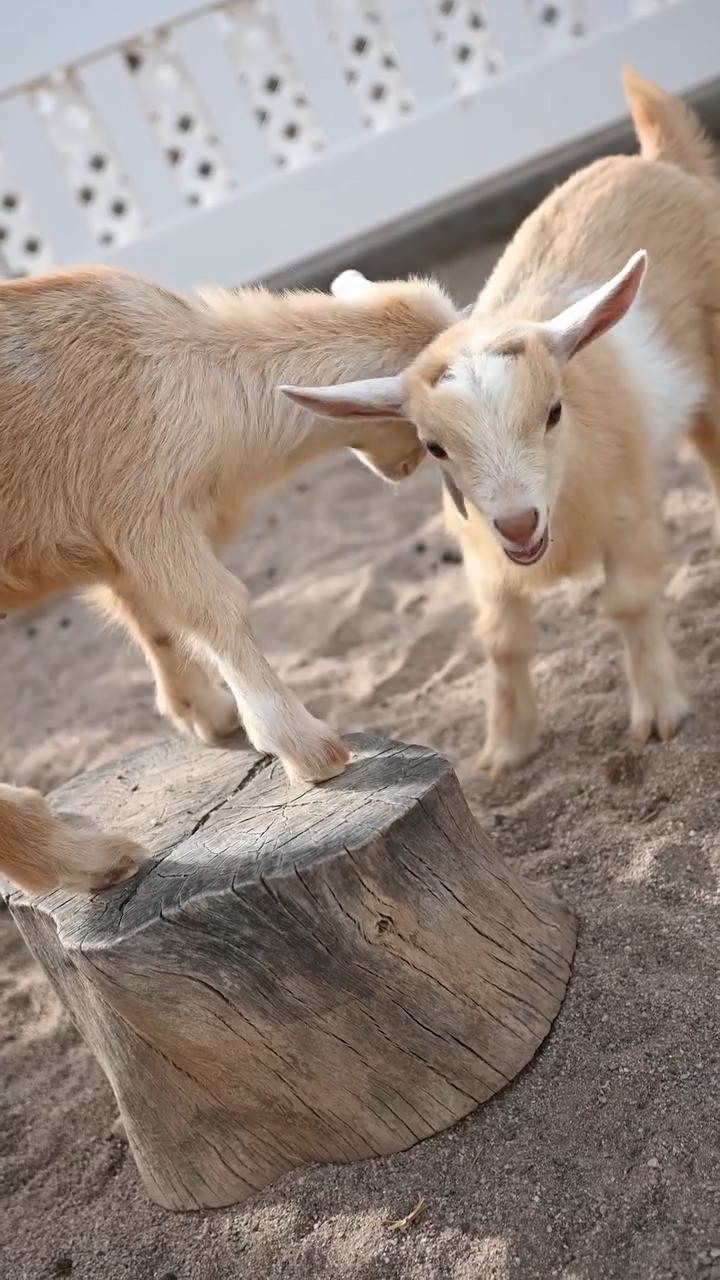– The role of engaging the public in wildlife conservation and name-voting initiatives.
– The importance of Nigerian dwarf goats in educational settings and breeding programs.
– The process and value of naming animals in zoos and conservation efforts.
– How zookeepers select appropriate names or themes for animals.
– Public participation in zoo activities impacts wildlife awareness and education.
As zoos nationwide strive to foster deeper connections between the public and the animal kingdom, one playful initiative stands out: inviting people to participate in naming the latest adorable arrivals. At the heart of this engaging appeal is a pair of Nigerian dwarf goats, Hazel and Moth, who have welcomed their kids into the world. The zookeepers, well-acquainted with the goats’ personalities and lineage, have proposed a series of names and themes that resonate with the story of these charismatic creatures. This participatory approach to naming is more than a novel attraction; it reflects the zoo’s dedication to education, conservation, and community involvement.
The practice of naming animals has ancient roots. Humans historically bestowed names upon their domesticated companions to denote ownership, express affection, or signify their roles within human society. In modern zoological parks, the ritual of naming takes on additional significance. Each name serves as a vessel of educational potential, baiting the hooks of curiosity and engagement as visitors learn the stories and science behind their favorite residents. Moreover, names can honor cultural heritages, reflect genetic heritage, or bring attention to conservation issues affecting the species.
Choosing names for zoo animals isn’t a frivolous affair. Names are carefully curated, emerging from in-depth discussions among zoo professionals. Factors like the animal’s sex, personality traits, physical characteristics, and conservation status provide valuable inspiration. In Hazel and Moth’s case, the keepers have developed a shortlist that reflects the goats’ origins, personality quirks, or thematic elements that may be tied to conservation education about Nigerian dwarf goats.
Names can act as educational tools, evoking interest in the species’ habitat, diet, social behavior, and conservation status. For example, if one of Hazel and Moth’s kids is named ‘Savanna,’ it could introduce conversations about the ecosystems these goats’ African ancestors roam and the challenges those environments face. Engaging names also aids in creating memorable experiences for zoo visitors, who may leave more informed and passionate about wildlife.
The public’s direct involvement in naming the goat kids amplifies the educational aspect. As individuals research the proposed names and themes to make their choices, they inadvertently deepen their understanding of the animals. With each vote cast, the public becomes an active participant in zoo operations, a subtle immersion into the world of wildlife conservation.
Engagement goes beyond education. Having a stake in the process makes people feel more connected to the animals they help name. This kinship fosters a sense of responsibility and concern for the goats, spurring interest in other ways to help protect and preserve wildlife. Voting for goat names becomes more than just an exercise in branding—it becomes a gateway to advocacy and conservation behaviors.
Public participation also extends zoos’ educational reach. As potential voters turn to family and friends to discuss their name selections, they spread awareness about Nigerian dwarf goats and the zoo’s mission. Social media channels buzz with activity as voters share the link to cast their ballots, unwittingly enlisting a larger audience with each post and bringing diverse demographics into the conservation fold.
Zoo management understands the appeal of such initiatives. By designing these programs, they harness the public’s love for charismatic creatures to promote a broader conservation agenda. Affection for Hazel and Moth expressed through naming their offspring, becomes a proxy for caring about all wildlife. When the winning names are triumphantly announced, the zoo cements this newfound relationship, ensuring the public remains informed and invested.
The enthusiasm is palpable as the zoo gears up for the announcement of the winning names on April 15. The anticipation builds community spirit and fosters a collective commitment to wildlife preservation. By participating in this initiative, individuals contribute to the story of Hazel and Moth’s kids, leaving a personal imprint on the zoo’s narrative.
Through this narrative, we glimpse the transformative power of engagement in wildlife conservation. What begins as a simple plea for help naming two Nigerian dwarf goats’ kids blossoms into a robust mechanism for education and stewardship. The zoo’s commitment to incorporating public participation becomes a testimony to its vision of a more informed and involved society where every individual’s voice can contribute to the grandeur of conservation efforts.
*****
Source Description
No KIDDING, we need YOUR help naming Hazel and Moth’s, Nigerian dwarf goats, kids!
Our keepers have selected names/themes, and you can vote for your favorite at the link in our bio (Vote for Goat Names) from now until Friday, April 12. The winning names will be announced on Monday, April 15.


